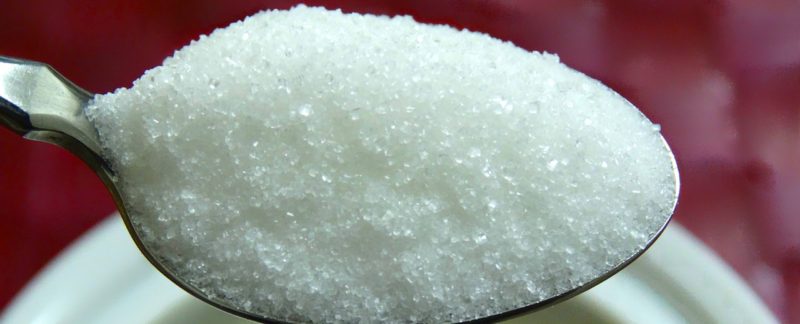Whether it is because you are literally eating it, talking about it, thinking about it or even hearing about it in the news sugar seems to be on the tips of many people’s tongues now days.
The term sugar can be confusing. You may know that sucrose, glucose and high fructose corn syrup are sugars. This is true. But it is also true that our bodies convert all carbohydrates into sugars. This is where it can confuse people as sugar is often used as a catch-all word for carbohydrate.
These are some sugars you may have at home:
- Agave
- Brown sugar
- Coconut sugar (or coconut palm)
- Corn syrup (light or dark)
- Date sugar
- Demerara sugar
- Honey
- Maple syrup
- Molasses
- Muscovado sugar (or Barbados sugar)
- Organic raw sugar
- Palm sugar
- Powdered sugar (Confectioner’s sugar or icing sugar)
- Raw sugar
- Syrup (example: Log Cabin Maple Flavored Syrup, caramel or chocolate syrups)
- Sucanat (dehydrated cane juice)
- Table sugar (granulated white)
These are the sugars that may appear on food labels that you may not recognize as sugars:
- Barley malt
- Cane crystals
- Cane juice crystals
- Caramel
- Carob syrup
- Castor sugar (super fine granules)
- Corn sweetener
- Corn syrup solids
- Crystalline fructose
- Dextran
- Dextrin
- Dextrose
- Diastic malt
- Diatase
- D-mannose
- Ethyl maltol
- Evaporated can juice
- Florida crystals
- Free flowing
- Fructose
- Fruit juice
- Fruit juice concentrate or Concentrated fruit juice)
- Galactose
- Glucose
- Glucose solids
- Glucose syrup
- Golden sugar
- Grape juice concentrate
- Grape sugar
- High-Fructose corn syrup (HCFS)
- Invert sugar
- Lactose
- Malt syrup
- Maltodextrin
- Maltose
- Mannitol
- Panocha
- Refiner’s syrup
- Rice syrup
- Sorbitol
- Sorghum syrup
- Syrup syrup
- Table sugar
- Treacle
- Turbinado sugar
- Yellow sugar
Going 100% sugar free is not easy. It is a process. Please have a listen to a recent podcast I did with Angela Atkins of Your Health Unbound. In it I describe my journey with Candida issues and sugar sensitivity.
Here are several tips from the podcast to help you bridge your cravings and begin to decrease sugar:
- Start slow. You’ve been eating sugar for a long time, your tongue is biased towards sweet tasting foods and your cravings will show up no matter how hard you try to wish them away. You need to desensitize your taste buds by introducing new flavors and preferences in order to move from sugar-full to sugar-free.
- Remove all foods that list sugar as the first, second, third, fourth or even fifth ingredient. You will be surprised how many packaged foods do not meet the criteria. This is a first start to removing added sugars from your diet. If you have trouble with this one, consider first removing all packaged foods that have sugar as a first or second ingredient… as you get used to moving away from sugar it will be easier to remove the packaged foods with sugar further down the list. Or you could just go for it and remove them now! Less tempting that way.
- Replace sugar in your morning coffee or tea by substituting with stevia. A little goes a long way and if you had previous experience with stevia tasting bitter then consider buying a brand that contains rebaudioside A which is less bitter than traditional stevia. Here is a recipe for a Simple Liquid Stevia.
- Eat foods that contain Fiber, Fat and Protein. Most whole foods naturally come packaged with these ingredients! In a pinch, here is a recipe for a muffin that can help to set your blood sugar going in the right direction in the morning. It contains 15 grams of both fiber and healthy fat as well as 22 grams of protein. AND it only takes 2 minutes to prepare!
- Learn about sugar healthy sugar substitutes. More information can be found here.



